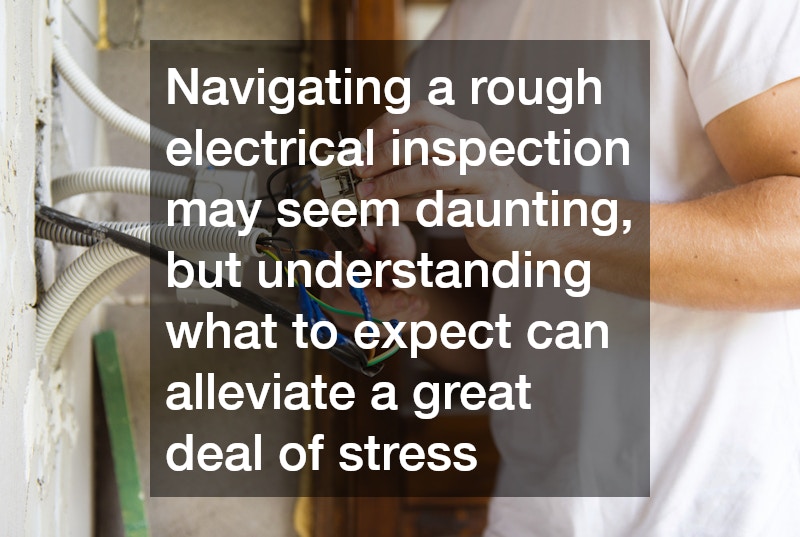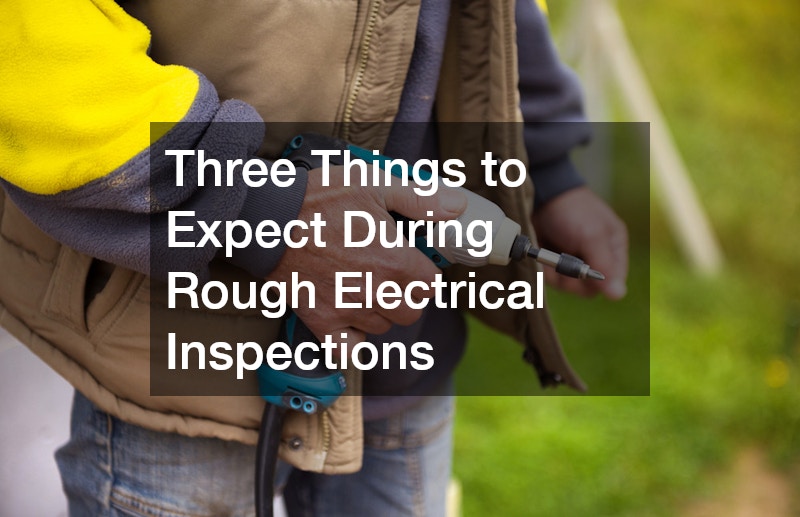Embarking on a construction or renovation project involves various stages of inspection to ensure that all work meets safety and compliance standards. One critical phase in this process is the rough electrical inspection. This inspection is essential for identifying potential electrical issues before walls are sealed and finishes are applied. Understanding what to expect during a rough electrical inspection can help you prepare effectively and ensure a smoother experience with fewer setbacks. Here, we delve into three key things you should anticipate during this crucial step, offering insights to ease any apprehension about this phase of your project.
Thorough Examination of Electrical Systems
The first aspect of a rough electrical inspection is the comprehensive examination of all electrical systems installed thus far. Inspectors are trained to scrutinize every visible component of the electrical phase, which includes wiring, electrical panels, junction boxes, and outlets. They ensure that all components are up to code, securely installed, and appropriately routed through the structure. It is important to remember that during the rough inspection, all systems should be complete but not concealed. Inspectors need clear access to evaluate the integrity and safety of the electrical installations, which means walls, ceilings, and floors may need to remain open until this stage is successfully passed.
Identification of Code Violations
Another critical expectation is the identification of any potential code violations. During this inspection, the compliance of your electrical work with local, state, and national electrical codes is assessed. Any deviation from these standards, such as incorrect wire gauge, improper grounding, or poorly situated junction boxes, can result in significant safety hazards. The inspector will provide a list of violations and required corrections to ensure your project meets all necessary electrical codes. Addressing these issues promptly is crucial, as unresolved infractions are typically barriers to obtaining completion certificates and can lead to substantial delays.
Verification of Circuit Continuity and Load Balancing
Ensuring the continuity of circuits and adequate load balancing are also priorities during a rough electrical inspection. Inspectors verify that circuits are complete and that they facilitate a proper flow of electricity without interruptions or potential overloads. This involves testing circuit continuity by confirming connections between outlets, switches, and the electrical panel. Balancing the electrical load is equally important as it prevents the potential for overheating and fires. During this inspection phase, inspectors may physically test circuits or use specialized equipment to confirm that the load is distributed evenly across the system, helping to prevent future operational failures.
Attention to Safety and Hazard Prevention
A fundamental aspect of rough electrical inspections is the assurance of safety standards and hazard prevention. Inspectors focus on identifying potential electrical hazards such as exposed wires, inadequate insulation, and insufficient system grounding. Given that faulty electrical systems can lead to fires, shocks, and other dangerous situations, this part of the inspection is vital for safeguarding the well-being of the building’s future occupants. Inspectors will highlight any areas of concern and recommend solutions to mitigate these risks. This proactive approach to hazard prevention ensures that safety is prioritized throughout the construction process.
Cooperative Problem-Solving with Contractors
Finally, expect a level of collaboration between inspectors and contractors. When challenges arise during a rough electrical inspection, it is not uncommon for inspectors to work closely with contractors to devise practical solutions. This cooperative dynamic is beneficial for both parties since inspectors can offer insights based on extensive experience while contractors provide technical expertise relevant to the specific project. Communication and collaboration can significantly streamline resolving any inspection issues, thus keeping the project on schedule. Keeping lines open with inspectors and being receptive to suggestions can facilitate a smoother path to passing future inspections.
Navigating a rough electrical inspection may seem daunting, but understanding what to expect can alleviate a great deal of stress. By anticipating a thorough examination, potential correction of code violations, verification of circuit continuity, attention to safety hazards, and cooperative problem-solving, property owners and contractors can better prepare for a successful inspection outcome. Addressing these components systematically ensures that your electrical systems are safe, efficient, and compliant with necessary standards. Ultimately, this stage plays an instrumental role in safeguarding the longevity and safety of your building projects, contributing to the overarching success and satisfaction with the final outcome.
.






